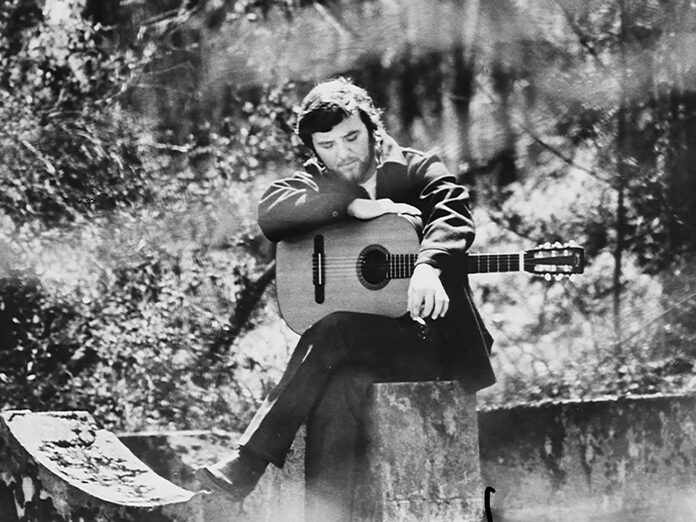Elvis Presley’s performance of “An American Trilogy” in his groundbreaking 1972 global satellite concert and subsequent multi-platinum album Aloha From Hawaii helped bring one singer-songwriter to wider attention, far beyond his Nashville base. The portmanteau of traditional, patriotic songs from the 19th century was first assembled by Mickey Newbury who, back in country music’s stomping ground, was already making a serious name for himself.
Elvis Presley’s performance of “An American Trilogy” in his groundbreaking 1972 global satellite concert and subsequent multi-platinum album Aloha From Hawaii helped bring one singer-songwriter to wider attention, far beyond his Nashville base. The portmanteau of traditional, patriotic songs from the 19th century was first assembled by Mickey Newbury who, back in country music’s stomping ground, was already making a serious name for himself.
Starting out as a jobbing songwriter, he fashioned hits for Roy Orbison, Tom Jones, Kenny Rogers and many more, while also working tirelessly to give others a leg-up. He persuaded old-school country chart regular Roger Miller to take a chance on “Me And Bobby McGee” by new kid on the block Kris Kristofferson, and also encouraged cut-from-similar-cloth contemporaries Guy Clark and Townes Van Zandt to move to Nashville.
Newbury’s own recording career had humble beginnings, with the underwhelming 1968 debut Harlequin Melodies comprised mostly of self-penned material others had already put their mark on. The man himself all but disowned the record, unhappy with the production and arrangements foisted upon him by RCA, prompting a bold step away from industry norms into the realm of the fledgling country outlaws.
The result was Looks Like Rain, a melancholic masterpiece that presents itself as a concept album in all but name. Country music had long been the terrain of the tearjerker, the pocket-sized tale of woe that rarely breached the three-minute mark, but Mickey’s focus was on a song cycle drilling deep into emotional despair, pain and regret.
At a time when Nashville favoured 10-track LPs lasting half an hour, Newbury poured his heart out on just seven songs largely linked by rain sound effects, over a total running time just shy of 40 minutes. The choice of the off-the-beaten-track, primitive Cinderella Studios lent itself to a more intimate, atmospheric sonic palette, imbuing the lyrical subject matter with a tangible sense of isolation.
Perhaps because he was used to writing for other voices, Newbury reveals himself to be something of an actor, able to inhabit the role of narrator with world-weary ease. Heartbreak blends with comic irony on the raconteur punchline of “She Even Woke Me Up To Say Goodbye”, leading straight into “I Don’t Think Much About Her Anymore”, a shoulder-shrug codicil laced with the ambiguity of a man still hurting but dismissive of his wounds.
On the evidence of the above two titles alone, Looks Like Rain sets out its stall as a profound study of bravado desperately attempting to paper over the cracks of forlorn wisdom, of a soul-searching, confessional examination of the self. Poetic vulnerability of this Herculean weight had rarely been heard in country music since the heyday of Hank Williams close to two decades earlier.
Throughout the ’60s, however, country had appeared to settle in to an unchallenged, user-friendly format of short and bittersweet soliloquies in which sorrow was expressed and dispensed with in the strum of a guitar. Even the genre’s most articulate and impassioned voices (George Jones, Loretta Lynn) sang stories that, by and large, offered a conclusion, if not closure.
Newbury, on his own albums rather than on material offered elsewhere, was geared more toward narratives with supplementary intrigue, hinting at further chapters to be played out somewhere over the horizon once the last note had been struck. The stripped-back, seven-minute opener “Write A Song A Song” is a compelling illustration of a what-happened-next? scenario that asks more questions than it answers (“The minute my feet touched the floor/The cold hardwood creaked with each step that I made to the door”).
In terms of an eloquent novelist’s approach to lyrics, and what can or can’t be shoehorned into the usually restrictive parameters of popular song, Mickey’s most evident late ’60s contemporaries are arguably Dylan and Jimmy Webb; writers with a playful relationship to both language and where it could lead. He’s at it again on the abstract folk lament “33rd Of August”, plucking images out the air that invite additional investigation (“There’s a big crowd at the station, where a blind man sings his songs/But he can see what they can’t understand”).
The contents of Looks Like Rain spawned covers by a dazzling array of names – including Jerry Lee Lewis, Johnny Cash, Joan Baez and fellow outlaw Waylon Jennings – and while the songs are reassuringly robust in isolation, a richer portrait of fascinating brush strokes emerges when they’re consumed as a whole. This is a downpour of formidable depth.



